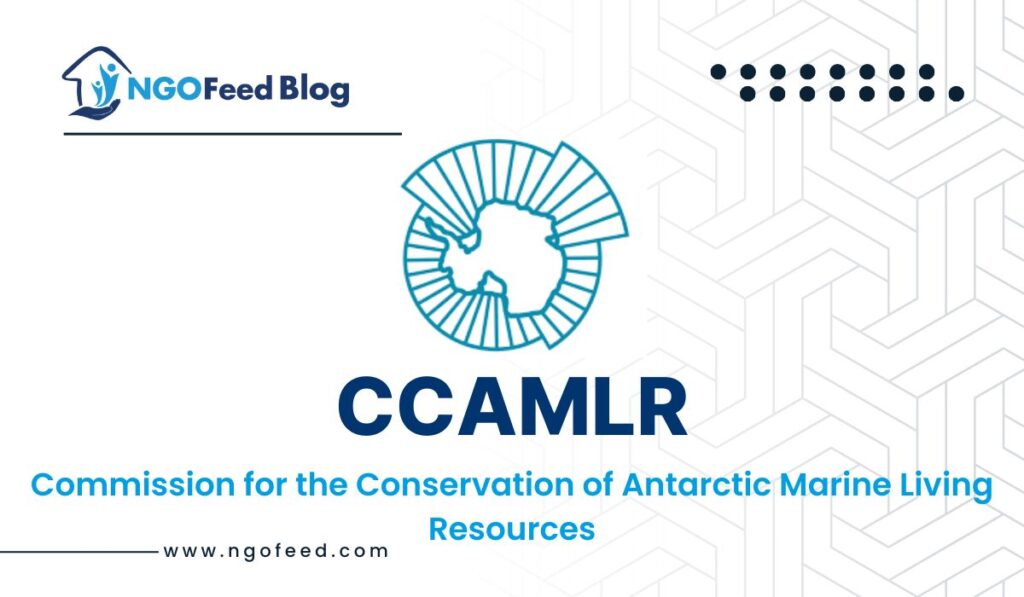CCAMLR Full Form: The Convention on the Conservation of Antarctic Marine Living Resources (CCAMLR) is a crucial part of the Antarctic Treaty System, established to protect marine life and environmental integrity around Antarctica. Opened for signature on 1 August 1980, it came into force on 7 April 1982, with its headquarters in Tasmania, Australia. CCAMLR was created mainly due to concerns over the impact of increased krill fishing on other marine species. In 1989, the Ecosystem Monitoring Program (CEMP) was launched to monitor the effects of fishing. On 19 October 2022, Ecuador became the 26th member of the CCAMLR.
Table of Contents
History
The 1960s: Large-scale fishing for finfish began, targeting mackerel icefish (Champsocephalus gunnari), marbled rockcod (Notothenia rossii), and Patagonian rock cod (Patagonotothen Gunther).
1970s: By the late 1970s, overfishing led to the closure or management of fisheries within CCAMLR’s decision rules, applying the requirements of Article II. Krill fishing also began mid-decade, with annual catches exceeding 400,000 tonnes by 1980.
1978: Increased fishing raised concerns about its ecological impact, prompting the Antarctic Treaty Consultative Parties to convene a conference on marine resource conservation.
1980: The Convention on the Conservation of Antarctic Marine Living Resources was signed in Canberra on 20 May 1980, establishing a framework for marine resource conservation in the Southern Ocean.
1982: The Convention came into force on 7 April 1982, leading to the management of major toothfish fisheries around various Southern Ocean islands and increasing annual krill catches to around 450,000 tonnes.
1990s-2000s: Illegal, unregulated, and unreported (IUU) fishing led to significant unreported toothfish catches. Measures introduced in the late 1990s and early 2000s, including vessel licensing, port inspections, and VMS, reduced IUU fishing to negligible levels.
2000s: Bycatch of albatross and petrels in longline fisheries declined to negligible levels due to mitigation measures. CCAMLR also adopted an IUU vessel list in 2002 and a catch documentation scheme for toothfish in 2001.
2002: CCAMLR established the first marine protected area (MPA).
2007: Measures were adopted to protect vulnerable marine ecosystems (VMEs).
2016: Following the general framework for MPAs adopted in 2011, an MPA was created in the Ross Sea, making it the largest high-seas MPA in the world.
Members
- CCAMLR is an international commission with 27 Members, and a further 10 countries have acceded to the Convention. Based on the best available scientific information, the Commission agrees on a set of conservation measures that determine the use of marine living resources in the Antarctic.
- Member States: Argentina, Australia, Belgium, Brazil, Chile, China, European Union, France, Germany, India, Italy, Japan, Namibia, Netherlands, New Zealand, Norway, Poland, Republic of Korea, Russian Federation, South Africa, Spain, Sweden, Ukraine, United Kingdom of Great Britain and Northern Ireland, United States of America, Uruguay
- Acceding States: Bulgaria, Canada, the Cook Islands, Finland, Greece, Mauritius, Pakistan, Panama, Peru, and Vanuatu.
Structure of CCAMLR
- The Commission meets annually and is the primary decision-making body. The Commission is advised by two Standing Committees, one on Implementation and Compliance and one on Administration and Finance.
- The Scientific Committee is a consultative body to the Commission. The Scientific Committee has some subsidiary bodies, working to provide scientific advice on ecosystem monitoring and management; fish stock assessment; statistics, assessments and modelling; and acoustics, survey and analysis methods.
- The Secretariat: works to implement the decisions of the Commission and the Scientific Committee.
Frequently Asked Questions (FAQs)
What does the CCAMLR do?
The Commission for the Conservation of Antarctic Marine Living Resources (CCAMLR) is responsible for conserving and managing the entire Southern Ocean ecosystem.
How many countries are in CCAMLR?
There are 26 Member States + 10 Acceding States in CCAMLR.



